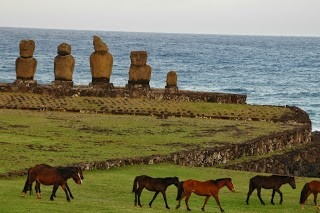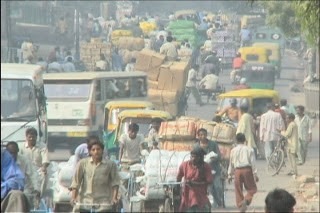Item Link: Access the Resource
File: Download
Date of Publication: May, 2015
Year of Publication: 2015
Author(s): Geoffrey Holland, Michael Charles Tobias
Geoffrey Holland – Unfortunately, as you point out, despite some encouraging trends, the damage to the planet’s living habitat and its biodiversity are unprecedented and getting worse every day.
Indifference, ignorance, and deeply misguided dogma do seem to be at the root of humanity’s inability to adequately engage this very troubling inertia. Too many of us are blindly caught up in an entrenched cultural model that discounts compassion in favor of mindless consumption and a toxic disconnect with nature. How do we begin to marshal the global cultural commitment and focus required to survive the monumental reckoning in which we find ourselves?
Michael Tobias – It’s too glib to suggest we all must do this or do that. Clearly, the only driver of such unison has, in past years and centuries been predicated upon disaster, like the legendary fact of how the Japanese have always come together as communities during times of great crisis and mass sorrow (e.g., Fukushima). We see it in the current natural disasters in Nepal and Vanuatu. But for the two civilizations that we know have gone extinct during several millennia, vast deforestation (Rapa Nui), rampant drought (Mesa Verde, Canyon de Chelley), Black Plagues, or a Hundred Years War, or four Crusades, the Spanish Inquisition, etc. did not seem to phase most locals across the world. It killed or didn’t kill them. So I must adduce that these community revivifications in the spirit of camaraderie might be viewed as the exceptions.

So, then, where does that leave us? If we cede our individualism and, in many respects, our underlying biological interdependency to a faith in total invasion of privacy by technology, government, and law enforcement (which is increasingly outsourced to private for-profits) we can expect to see a devastating toll upon the privacy needed by other species. Every square inch of the planet has been monitored, photographed and stored continually by satellite data in image banks. It is much more than human imagination that has invaded every quadrant of the world. The contradiction hangs upon the electrical grid and what it means to people’s livelihoods, happiness and health, as measured in gigawatts (GW). These grids devour vast resources needlessly. You are right to argue that we are seeing a massive change in the energy consuming modalities, towards far more benign technical tactics, with respect to emissions and other problems. No one has yet come up with a high probability equation for computing the absolute impact of current, or near future technologies as deployed amid a burgeoning human population (e.g., 10 billion), although there have been many fine attempts. But, I see no obvious route towards a mollifying of the carnage occurring in that short or mid-term range, in terms of biological fall-out. It may well be that we will just have to live with it (an ironic expression).

On the other hand, one could “put on a happy face” and embrace everything that remains that is fine, and good and elegant and harmonious and compassionate, and let those guises be our guide.
Indeed, that is the least we must do. Other areas of consideration, of course, concern personal diet, consumption habits, our moral compasses – internal thoughts and willpower, outward expression and demeanor; setting an example of constant kindness for our friends and loved ones and those who meet us through our deeds. The example of compassion can indeed strike the match of contagion and lead to ramping-up towards that critical mass of positive emotion amid large numbers of people; a steep escalation of that biophilia propensity we all genetically probably share.
The question is to what extent do we share it? How does kin altruism actually work in terms of long-term genetic ramifications of ours and other species? This has long been a raging debate amongst biologists and neuro-physiologists. Whether, for example, that predilection towards generosity and unstinting philanthropy, kindness, unconditional love, is stifled or liberated, exhausted or rejuvenated, suppressed or set free by continuing evolution, which, by many accounts is rapidly accelerating. A “new nature” is upon us. This might be a good thing, or not.
I have no doubt that young people today throughout the world are abundantly in tune with a more virtuous and rigorous approach to the world than perhaps ever before. This is great news. They have access like never before to information. The big questions are: Can they sort through the proliferation of data in order to decipher and embrace ethical choices? Can they align themselves politically with real-time decisions that are not forced upon them, or subtly infused into their curricula, their viewing of advertisements, their reading of the world through all of the daily onslaught of media? Will knowledge gleaned on the internet suffice as a surrogate for the experience that has been gained by arduous trial and error over tens-of-thousands of years in the service of a higher and higher calling towards that murky realm we name compassion toward others?

My fear is we are in an age of the biological asymptote. By that I refer to the two learning curves that may not ever be able (mathematically speaking) to meet. The first is that irrefutable truth that people are becoming less violent towards one another, and more violent towards animals and animal products (the vegan’s version of the aforementioned IPAT equation). People who are ecologically illiterate, or, who simply are too stretched, poverty stricken, trapped by the major inequality gaps around the world to even consider the humane alternatives to all those cheap calorie expedients targeting them. This is an environmental social justice issue totally out of sync with all of the ecological green alternatives narrative that might too easily calm people into thinking that the learning curve is working. Or that we are headed towards some big happy human zero emissions party that will solve everything. It won’t. It can’t.And finally, when push comes to shove, will this new generation of technologically advantaged young people (some two billion youths approaching their child-bearing years at present who are the lucky ones) have the courage of their convictions when it comes to the big picture – Nature – which they know is in a process of severe and rapid fragmentation and ruination?
The second, and equally atrocious line on that asymptotic equation is the grossest numeric reality of the Anthropocene. If we consider the much debated Toba Supervolcano approximately 70,000 years ago, that may well have hurtled the human species into a genetic squeeze in just a matter of a few years, resulting in no more than 15,000 individuals, it is clear that the 19th so called Dansgaard-Oeschger event (D-O), that is, dramatic overnight meteorological oscillations, play a critical role in the Earth’s biological systems. As one more player, our species could easily be wiped, even with 7.35 billion of us on the Earth. Not by a volcano, but by our own indifference to ecosystems and the approximately 44,000 populations of species we are exterminating every day. This is colossally significant. Yet, we have it in our heads that we are somehow here forever and a day. It is at the heart of our ridiculous sense of superiority over other species. This is what worries me most: that our species’ very existence hinges, in my opinion, on our humility; that that humility is a crucial factor in the meeting of two learning curves – the first, our penchant for meting out mayhem to other species and their habitat, and second, our inability, it would appear, to grasp our own vulnerability in this planetary high stakes game of life. Arrogance is a disease, in biological terms. It is especially dangerous when the bearer of that attitude is blind to the predicament.
If, somehow, we can abolish the asymptotic irreconcilability elaborated above, and replace it with a rapid calming of our behavioral frissons; our frantic consumption; our continuing high Total Fertility Rates; and our destruction of the natural world in all her guises; if we can do that, and teach that, and get everyone, or nearly everyone on board rapidly (by which I mean five, ten years), then yes, perhaps we can make it… Read more.
The views and opinions expressed through the MAHB Website are those of the contributing authors and do not necessarily reflect an official position of the MAHB. The MAHB aims to share a range of perspectives and welcomes the discussions that they prompt.